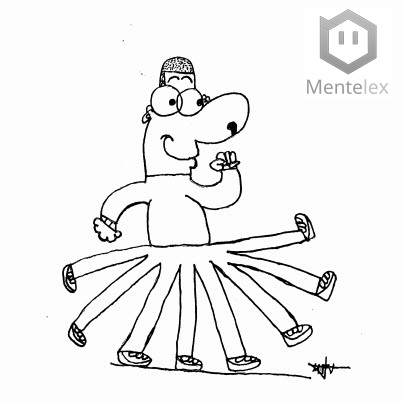
Restless Leg Syndrome and ADHD
Restless Leg Syndrome (RLS)
RLS affects 1,5 million children and adolescents. Often begins during childhood or adolescence and can result in poor intellectual and/or emotional function. Although symptoms are worse at night, it is possible to experience it throughout daytime.
CAUSES
- Genetics: Autosomal – dominant hereditary pattern
- Chromosomes genetic loci 9p, 12q, and 14q.
- Dopamine abnormality. (Cervenka et al., 2006)
- Iron deficiency: low serum ferritin levels.
SIGNS
- Fidgeting or stretching legs in bed.
- Hyperactivity in class.
- Sleep deprivation and irritability in the morning.
PERIODIC LIMB MOVEMENTS DURING SLEEP
- Brief jerks (0,5 seconds) of the limbs during sleep in 20 second intervals.
- Present in 80% of individuals with RLS.
FAMILY HISTORY
- Biological parents with RLS have 50:50 chance of passing RLS to their children.
PHYSICAL EXAMINATION
- Mild degree of iron deficiency.
TREATMENT
- Good Sleep Habits: Sleep needed per age:
Age 2: 12 hours
Age 5: 11 hours
Age 10: 10 hours
Adolescence: 9 hours
Adulthood: 7 hours
- Teens
Avoid caffeine intake in the evening.
Regular exercise.
Bedroom without TV, computers, etc.
- Iron supplementation and pharmacological treatment.
DIAGNOSIS
- Polysomnography
RELATIONSHIP WITH ADHD
- RLS can aggravate inattention.
- Sleep deprivation impairs cognitive function and memory.
- Can exist a subgroup of ADHD having RLS.
- Methylphenidate does not worsen SLP.
References
Ruottinen, H. M., Partinen, M., Hublin, C., Bergman, J., Haaparanta, M., Solin, O., & Rinne, J. O. (2000). An FDOPA PET study in patients with periodic limb movement disorder and restless legs syndrome. Neurology, 54(2), 502-502. doi:10.1212/WNL.54.2.502
Turjanski, N., Lees, A. J., & Brooks, D. J. (1999). Striatal dopaminergic function in restless legs syndrome: 18F-dopa and 11C-raclopride PET studies. Neurology, 52(5), 932-932. doi:10.1212/WNL.52.5.932
Cervenka, S., Pålhagen, S. E., Comley, R. A., Panagiotidis, G., Cselényi, Z., Matthews, J. C., … Farde, L. (2006). Support for dopaminergic hypoactivity in restless legs syndrome: a PET study on D2-receptor binding. Brain: A Journal of Neurology, 129(Pt 8), 2017–2028. doi:10

